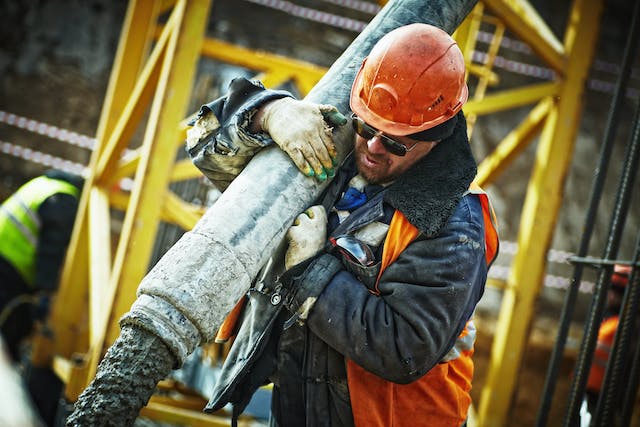Safety is an indispensable aspect of operations in the modern workplace, demanding unwavering attention and rigour. Implementing robust safety measures like the standards set by Stronghold Safety is not just about adhering to regulations but nurturing a culture of safety and responsibility. This comprehensive article will explore the multifaceted approach to integrating stronghold safety measures in the workplace, emphasizing their critical role in employee wellbeing and operational efficiency.
Identifying Potential Hazards
The journey towards a stronghold safety environment begins with meticulously identifying potential hazards. This critical step involves thoroughly examining the workplace to recognize risks ranging from physical hazards, like slip and trip dangers, to ergonomic challenges and potential exposures to harmful substances. The process includes assessing the functionality of machinery, the ergonomics of workstations, and the overall workflow to identify areas where injuries or accidents could occur. Regular risk assessments, ideally involving inputs from various staff levels, help keep these evaluations dynamic and responsive to changes in the workplace. This proactive approach is crucial in preempting safety issues before they escalate into serious problems.
Implementing Safety Protocols
After identifying potential hazards, the next crucial phase is developing and implementing tailored safety protocols. These protocols serve as a roadmap for safe workplace practices, encompassing machinery operation guidelines, procedures for handling hazardous materials, and emergency response strategies. The key to effective safety protocols lies in their specificity and adaptability; they should be tailored to address the unique risks of a particular workplace and flexible enough to evolve with changing circumstances. Clear documentation and accessibility of these protocols are vital, ensuring that every employee can understand and apply these guidelines in their daily activities, regardless of their role.
Training and Awareness
Comprehensive training and ongoing awareness campaigns are essential for safety protocols to be effective. Training programs should encompass the theoretical aspects of safety procedures and practical, hands-on sessions where employees can engage with safety practices in a controlled environment. These programs should be regular and inclusive, catering to all workforce levels. Beyond formal training, fostering a safety culture through awareness initiatives – such as safety bulletins, workshops, and regular meetings – reinforces the importance of workplace safety. These initiatives help keep safety at the forefront of employees’ minds, encouraging a proactive approach to hazard identification and response.
Regular Safety Audits
Regular safety audits are imperative to ensure the ongoing effectiveness of safety measures. These audits comprehensively review all workplace safety protocols, practices, and equipment. They evaluate the applicability and effectiveness of existing safety measures and find areas that require improvement or updates. Safety audits should be systematic and thorough, covering every aspect of the workplace’s operations. They often involve checking the condition and compliance of safety equipment, reviewing incident and accident reports for patterns or recurrent issues, and ensuring that all safety signage and information are current and visible. The findings from these audits should lead to actionable steps for enhancing safety protocols and practices.
Encouraging Employee Involvement
A crucial element in building a stronghold safety environment is active employee involvement. Encouraging a participatory approach where employees are empowered to contribute to safety discussions, report hazards, and offer feedback on safety measures is key. This involvement can take various forms, such as safety committees, suggestion programs, and regular safety meetings. When employees are engaged and have a sense of ownership over their workplace safety, compliance with safety protocols is higher, and identifying potential hazards is faster and more efficient. Furthermore, involving employees in safety decisions and implementations fosters a stronger safety culture, where safety is seen as a collective responsibility rather than a top-down mandate.
Technological Integration for Safety
The role of technology in enhancing workplace safety is increasingly significant. Technological solutions, ranging from advanced safety management software systems to wearable devices that monitor environmental conditions and employee health indicators, are transforming how safety is managed in the workplace. These technologies can facilitate more efficient tracking of incidents, automate safety compliance checks, and provide real-time data on workplace conditions, allowing for quicker responses to potential hazards. Additionally, using augmented reality (AR) and virtual reality (VR) for safety training provides immersive and interactive experiences, making training more engaging and effective.
Conclusion
In conclusion, integrating stronghold safety measures in the workplace requires a comprehensive and proactive approach. Each aspect is crucial in building a safe and secure work environment, from the initial hazard identification step to implementing tailored safety protocols, regular training and awareness, systematic safety audits, active employee involvement, and integrating technological innovations. Like Stronghold Safety, these measures ensure compliance with safety regulations and demonstrate a commitment to the well-being and protection of employees. By prioritizing these measures, organizations create a safer workplace and foster a culture of safety that permeates every level of their operations, contributing to their overall success and sustainability.










